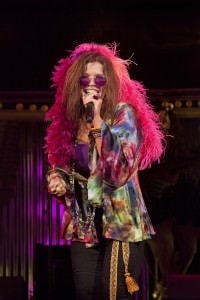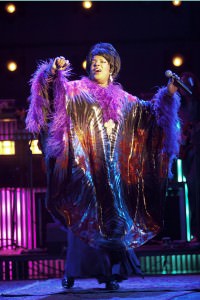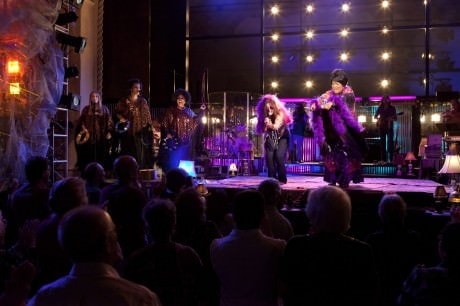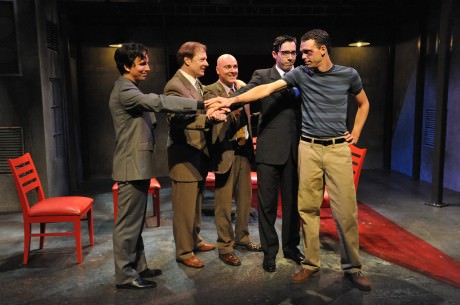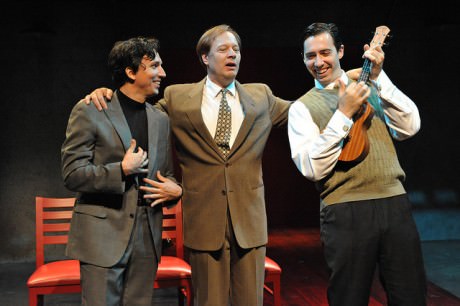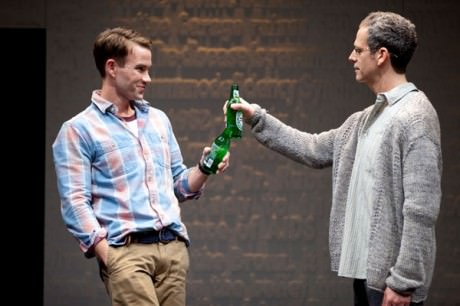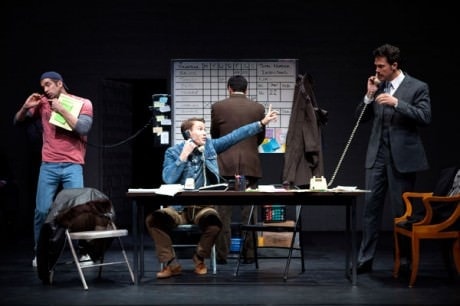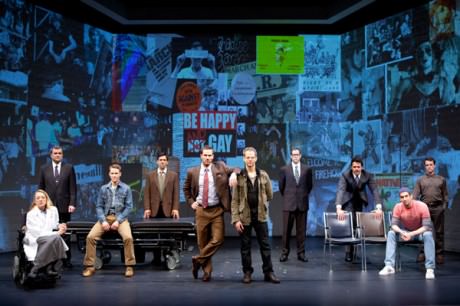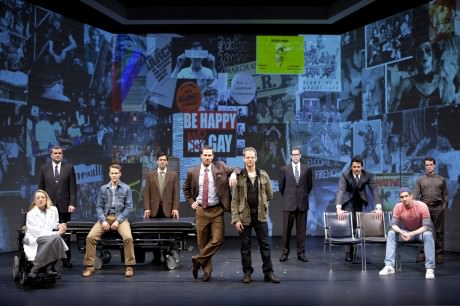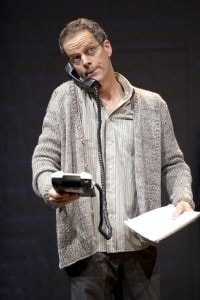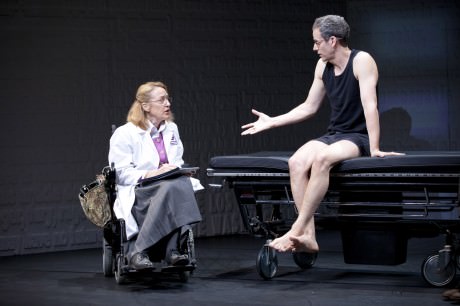Mart Crowley’s groundbreaking play The Boys in The Band, now being given a superlative production by Dominion Stage at the Gunston Arts Theatre, is perfectly “on-target” as a study of psychological ferment amongst a group of homosexual men in a pre-Stonewall era. This play has been studied, analyzed and labeled to the max because of its strong language, astringent characters and debates about its relevance. I am going to review this absorbing piece as an “in–the–moment” theatrical drama with strong comic elements. First off, however, some very brief context.

The play premiered off –Broadway in 1968 and– like Who’s Afraid of Virginia Woolf? and Angels in America– the play created an immediate sensation. The timing of the play was tightly (and unexpectedly) interwoven with subsequent historical events. In 1969, the Stonewall Riots occurred in NYC and forever changed the trajectory of the homosexual milieu and the Gay Rights Movement took off like a thunderbolt.
Then, in 1970, William Friedkin’s film version (quite faithful to the theatrical version –only ever-so slightly “opened-up”) premiered and was also critically received overall favorably but now (like the timing of the film Can’t Stop the Music AFTER the disco era had subsided), the film came out too late and the characters and themes were criticized as being stereotypes and irrelevant to the liberated spirit of the Gay Rights Movement. This very tight timeline is an unfair and unnecessary criticism of an extremely well-crafted play written with perception and insight —–a play or musical must be judged by the period it was written in. This play’s importance is also very markedly important as it was the first play to deal so overtly and openly with gay themes.
The close-knit group of characters author Crowley has created survive among the discrimination of the outside world (homosexuality was still labeled as a mental illness in 1968) through shared bantering, sarcastic ripostes, and–in this play—a social gathering full of wit and fraternal solidarity. Gay references abound from In this hermetically–sealed universe, humor is a survivor’s self-defense mechanism against these characters’ preoccupations with aging, loneliness, self-acceptance, denial, self-disclosure and secrecy.
Upon entering the theatre space, I was absolutely astounded by the intricacy and sophistication of the Set Design and Décor. Every element that greeted my eye was tailored to enhance the interactive feel of this play. In 2010, a critically-acclaimed production of The Boys in the Band was presented in an actual penthouse apartment in New York City’s Chelsea neighborhood. This production is about as close as one could get to that real, authentic and interactive environment. The Set Design became an integral part of the production.
The impressive Set Design was compelling from the central living room area to the bar area on the left and the raised upper platform level which comprises the bathroom and the bedroom area. In the style of film Director Robert Altman, this production’s inventive Director Rosemary Hartman often has scenes and dialogue overlapping one another or played out in counterpoint from various areas of the stage space at one time. Warhol prints of Marilyn Monroe and Jackie Kennedy grace the walls and a lava lamp appealingly stands on a table. Elaborate Bravos to Set Design by David M. Moretti, Set Construction and Set Painting by Alex J. Bryce, Set Dressing by Helen Bard-Sobola, and Properties Design by Terri Slivka.
Direction of this probing production by Rosemary Hartman daringly stresses the pain and angst of these characters as they attempt to create their own sense of family in their own hermetically-sealed universe-a universe constructed as a defiant way of celebrating life and coping amidst a hostile external world of bigotry and intolerance. I have never seen a production of this play that stressed the pain of these characters in such a vivid and lacerating manner. Director Hartman creates a harsh dissection here.
The main plot (although I believe this play is much more of a character study)-such as it is-centers on the throwing of a birthday party for a friend of host Michael—namely, the sarcastic and opinionated Harold. As numerous friends assemble at Michael’s apartment, complications ensue when an old college roommate named Alan arrives at the door of the party unexpectedly.
The complication exists because Alan claims to be straight yet, in reality, he might be considered a closeted homosexual with very conflicted feelings —-especially against Michael’s effeminate friend Emory. Through a vicious gay-panic attack by Alan towards Emory, the actual birthday party dinner/opening of gifts (one gift is a hustler named Cowboy), and a cruel game propelled by Michael to impel the attendees of the party to call people they loved from their past in order to “rack up points”-the action of the play unfolds as a study of the psyches of these gay men as they intermingle, taunt one another and bond with one another.
In the pivotal central character role of Michael, Matthew Randall, is amazing in all aspects of his performance. Mr. Randall holds this production together with his supreme ability to stay in total character in every second of his time on stage. Randall’s concentration is total –I sat about four feet away from him in much of this play and his immersion in his role was absolute. His portrayal of Michael’s self-loathing and guilt was complexly developed especially in his scene of guilt after taunting his friends at the birthday party. His emotional acting dexterity was shown as he fluidly careened from the in-control party host to the intermingling friend and, finally, to the hostile accusatory host. It was an honor to watch this performance.
Jeffrey Davis’ performance as the supportive friend, Donald was natural and unstudied. Mr. Davis wisely played the part with the correct attitude of quietude and a caring demeanor with bitchery only made without extreme provocation.
In this fine ensemble, I must stress that Gary Bernard DiNardo’s performance as the effeminate and almost constantly-chattering Emory was superlatively witty, droll and totally touching. Unlike other actors I have seen play this role, DiNardo underplayed the more overt aspects of his character and, thus, made his character all the more sad, endearing and touching. His comic timing, physical stage authority, and reactions were a marvel to behold. Particularly amusing was DiNardo’s command of the scene where he served dinner to his friends. DiNardo’s embodiment of panic and horror when attacked physically by the character of Alan was extremely well-played.
In the roles of the couple with conflicted feelings on monogamy versus promiscuity, Todd Paul as Larry and Keith Miller as Hank cunningly portrayed the convoluted permutations of their relationship. Paul was accomplished in his monologue about his need for more sexual fulfillment amidst living in a relationship. Miller was commanding in his more authoritarian, dogmatic performance style that perfectly fit his character.
Malcolm Lee was wonderful in the role of Bernard. Mr. Lee added complexity to his role by sticking up for himself and his ideas when attacked and put down by the other characters. This injection of defiance and pride in the portrayal of Mr. Lee made his character much more interesting.
Jerry Hoffman’s portrayal of the more conservative and genteel character of Alan was appropriately stolid, self-righteous and slightly narcissistic. Hoffman’s rage at Emory and lust after Hank were beautifully played. Hoffman possesses a sonorous speaking voice that carried him through the play with deft vocal aplomb.
Rob White’s role as the hustling Cowboy was pitch-perfect in the brief time Mr. White had to speak. White’s sheer physicality and callow reactions to his lack of formal education were a delight to observe.
Mario Font’s portrayal of the pot-smoking, acerbic and sarcastic character of Harold was alternately deadpan and outrageously provocative. Mr. Font’s reactions and ripostes to Michael were particularly well-played. Font’s reactions to his birthday gifts ran the gamut from appreciative, utterly appalled to sentimentally quiet. A very versatile actor, indeed!
The Lighting Design by Ken and Patti Crowley is stunning. The lights go up full-blast in the larger ensemble scenes and, appropriately more focused and dimly –lit for more intimate scenes.
Costume Design by Farrell Hartigan is totally appropriate for the period of the late sixties. Hartigan chooses brightly–colored shirts and adds interesting touches such as the red socks and purple pants of one character.
The influence of this play on other playwrights such as Larry Kramer, William Finn, Terrence McNally, and Tony Kushner is obvious and an accurate forecast of future post–Stonewall themes such as the AIDS crisis, historical forces, and more stress on assimilation of the homosexual into the fabric of society.
Three bits of somewhat arcane knowledge associated with the play are:
- There is a sequel entitled The Men from the Boys that premiered successfully in San Francisco, California several years back-but it is rarely revived.
- The Influence of Who’s Afraid of Virginia Woolf? is obvious to me in the cruel “party game” of Act Two-yet Edward Albee has been quoted as hating the play. This seems very odd to me.
- The title of the play was taken from the film A Star is Born when James Mason advises the Judy Garland character to “sing for herself and the Boys in the Band”.
The enigmatic and crushing attempts of this group of men to cope with their feelings and survive in a non-comprehending outside world are mirrored in Michael’s comment about his father when he died in his arms: “I don’t understand any of it. I never did.” Laughter may abound in this superb production of Crowley’s play but the pain underneath the sarcastic jokes is palpable.
Strong Commendations must be given to the entire Dominion Stage acting company and technical crew and, once again, to Director Rosemary Hartman for her triumphant Directorial vision. Kudos also to Co –Producers Larry Grey and Jennifer Lyman.
Do not miss the Dominion Stage’s major revival of The Boys in the Band!
Running Time: Two hours with one 15-minute intermission.

The Boys in the Band plays through April 16, 2016 at Dominion Stage performing at the Gunston Theatre Two – 2700 South Lang Street in Arlington, VA. For tickets, purchase them online.
RATING: ![]()
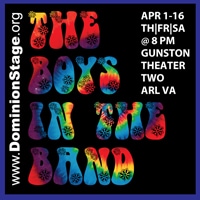
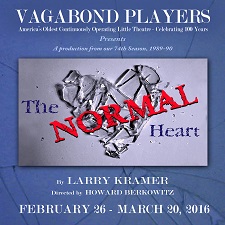
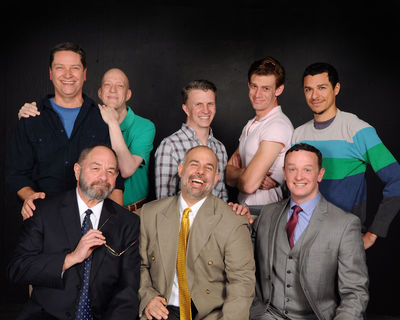
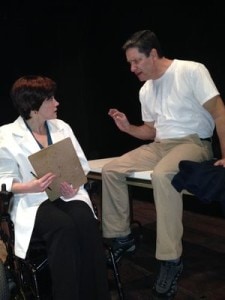
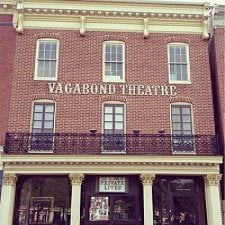
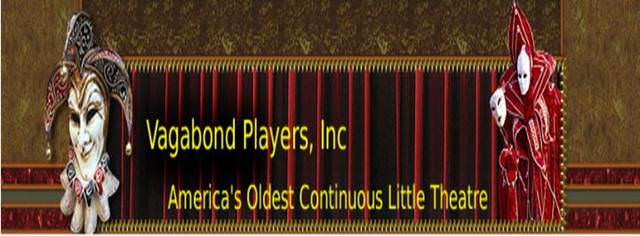
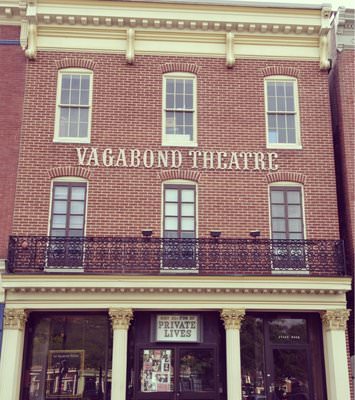
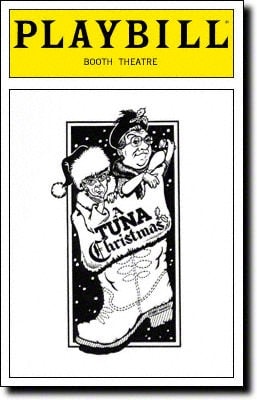
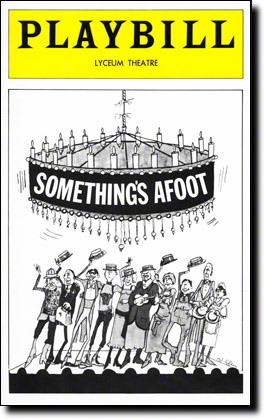
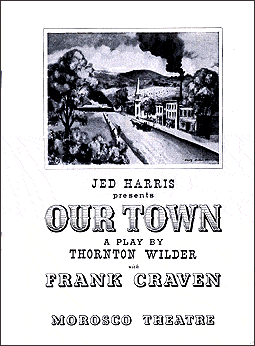
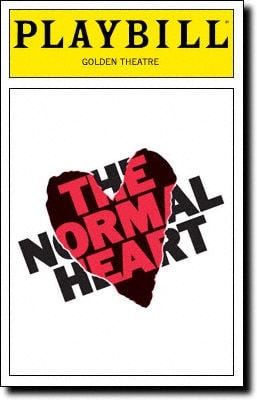
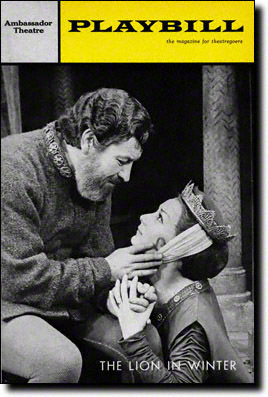
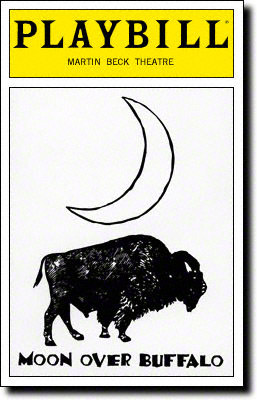

![vagabond players banner_thumb[1]](https://dctheaterarts.org/wp-content/uploads/2015/03/vagabond-players-banner_thumb1.jpg)

